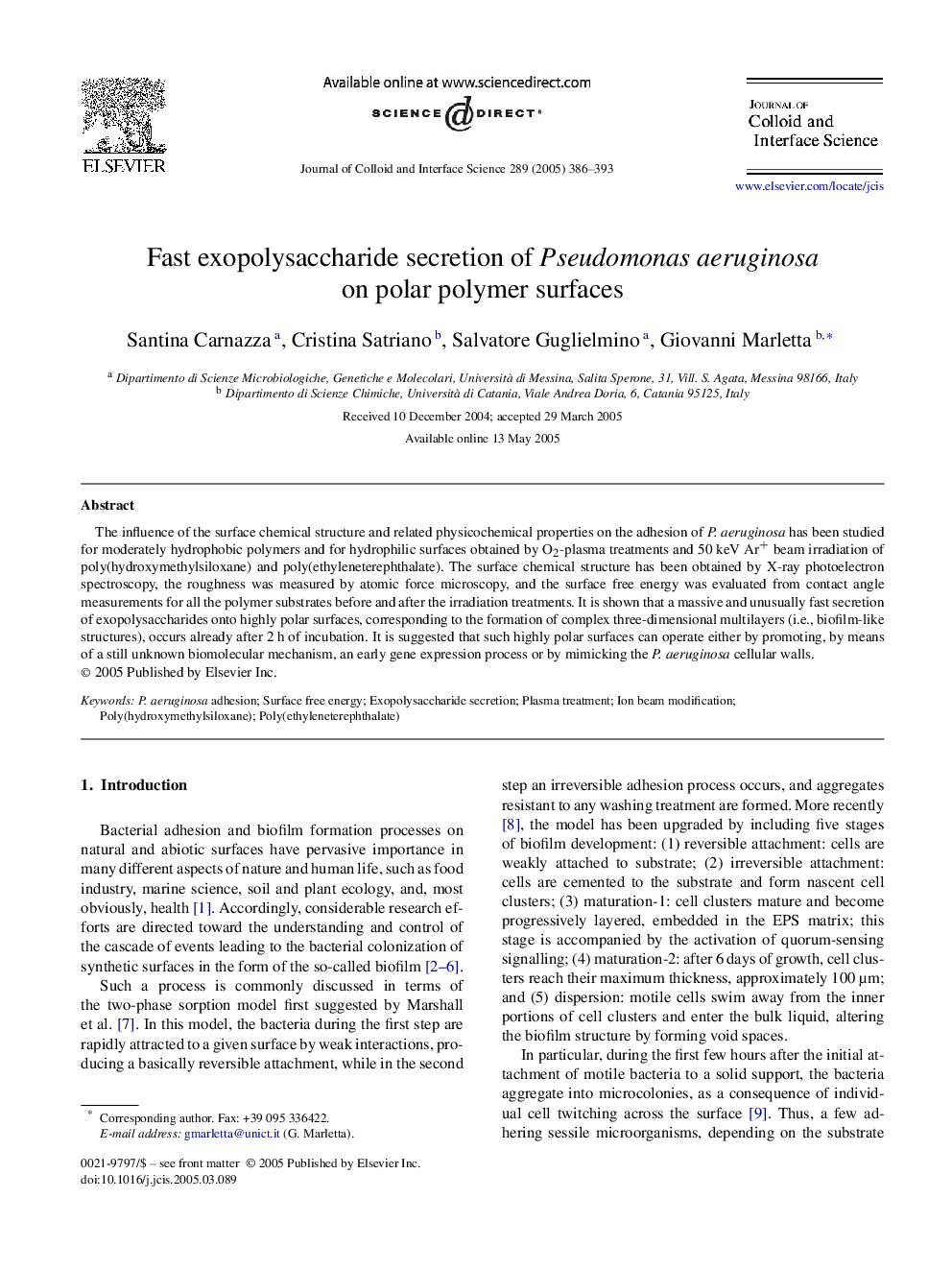| Article ID | Journal | Published Year | Pages | File Type |
|---|---|---|---|---|
| 10377815 | Journal of Colloid and Interface Science | 2005 | 8 Pages |
Abstract
The influence of the surface chemical structure and related physicochemical properties on the adhesion of P. aeruginosa has been studied for moderately hydrophobic polymers and for hydrophilic surfaces obtained by O2-plasma treatments and 50 keV Ar+ beam irradiation of poly(hydroxymethylsiloxane) and poly(ethyleneterephthalate). The surface chemical structure has been obtained by X-ray photoelectron spectroscopy, the roughness was measured by atomic force microscopy, and the surface free energy was evaluated from contact angle measurements for all the polymer substrates before and after the irradiation treatments. It is shown that a massive and unusually fast secretion of exopolysaccharides onto highly polar surfaces, corresponding to the formation of complex three-dimensional multilayers (i.e., biofilm-like structures), occurs already after 2 h of incubation. It is suggested that such highly polar surfaces can operate either by promoting, by means of a still unknown biomolecular mechanism, an early gene expression process or by mimicking the P. aeruginosa cellular walls.
Related Topics
Physical Sciences and Engineering
Chemical Engineering
Colloid and Surface Chemistry
Authors
Santina Carnazza, Cristina Satriano, Salvatore Guglielmino, Giovanni Marletta,
